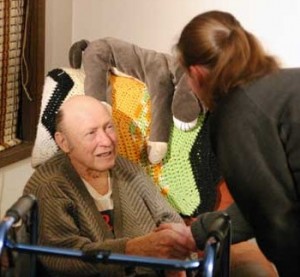St. Vincent’s Hospital (1849-2010)
 Locking the entrance to the emergency room: there could not have been a more potent image to the final day of St. Vincent’s Hospital in New York City.
Locking the entrance to the emergency room: there could not have been a more potent image to the final day of St. Vincent’s Hospital in New York City.
After 160 years, St. Vincent’s closed because of financial problems. It was the only hospital serving Greenwich Village and the last Catholic hospital in Manhattan.
The closing of a hospital can feel like a death in the family. A hospital is a stalwart member of the community, always there when you need it. It’s there for emergencies and it’s there for ongoing continuity medical care.
Hospitals are homes for generations of families, ushering lives in, attending lives’ ends. Hospitals are repositories for individual stories and dramas, both large and small.
When I walk down the halls of my hospital, especially in the older wings, I often feel as though the walls are permeated by the ghosts of generations of patients. Not scary ghost, but ghosts that remind us of our history.
Climbing up the marble steps in our oldest building, I feel the smooth depressions in the marble where generations walked before me—generations of doctors, nurses, and patients.
A hospital is like a living organism, pulsing and breathing. So when one closes, it truly does feel like a death. I hope that the patients of St. Vincent’s find new doctors soon at neighboring institutions. I hope that the doctors, nurses, and administrators who have served St. Vincent’s do not end up with unemployment as the reward for their years of service. I hope that the interns and residents quickly find programs to absorb them so that they won’t lose time in their training.
It’s a sad day here in New York, but let us at least raise a toast of appreciation to St. Vincent’s hospital, for its 160 years of service, for the people who made it run, and for the patients who made it alive.
Rest in peace.
